A look at thirty years of classic Disney movie comics brought to audio life by film cast members and top voice actors.

FISHER-PRICE CLASSICS DELUXE COMIC BOOK & TAPE SERIES
Series Released in 1985. Producer: Ted Kryczko. Voices Include: Adriana Caselotti, Lucille Bliss, Corey Burton, Tony Pope, Laurie Main, Linda Gary, Patricia Parris and Hal Smith.
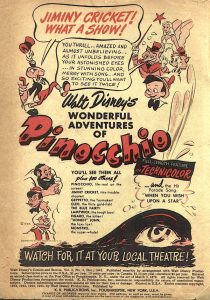 The mid-eighties saw a gradual transition from vinyl records to compact discs, with cassettes an already popular format especially for those on the go. For children’s audio, cassettes were emerging as the preferred audio format at the time because kids could, presumably, do less damage to them. Their biggest advantage was portability. For several years, Disneyland Records released products with character art proclaiming “Take a Tape Along.”
The mid-eighties saw a gradual transition from vinyl records to compact discs, with cassettes an already popular format especially for those on the go. For children’s audio, cassettes were emerging as the preferred audio format at the time because kids could, presumably, do less damage to them. Their biggest advantage was portability. For several years, Disneyland Records released products with character art proclaiming “Take a Tape Along.”
Fisher-Price, makers of durable toys that often span generations (your author had the Tick-Tock Teaching Clock and the Play Family Lacing Shoe House) got into the children’s audio business just before the VHS boom. Among the Fisher-Price titles were DC Comics adventures and Disney character and film properties.
Some of the Disney titles were identical to vinyl and cassette counterparts in Fisher-Price packaging with variant covers. There were a handful, however, that were original productions never released in any other format but audio cassette by Fisher-Price.
The six-title “Fisher-Price Classics Deluxe Comic Book and Tape” series was the most ambitious and historically significant of all the sets. The packages almost seem to hide the true identity of the source materials to give them a modern (and assumed “more marketable”) product appearance as well as to make them “marry” visually with other Fisher-Price designed items on store shelves and racks.
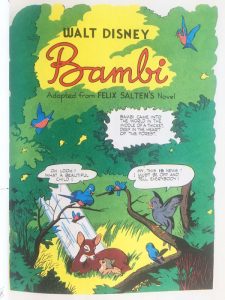 The truth behind the more contemporary looking covers are vintage comic book gems from various talents working or freelancing for the Walt Disney Studios, Dell Comics and King Features between 1937 and 1967. New art was created for the covers and blister packaging, but the interior pages are reprints of the vintage books—but this time, they’re also dramatized with a full Disney cast, music and sound effects!
The truth behind the more contemporary looking covers are vintage comic book gems from various talents working or freelancing for the Walt Disney Studios, Dell Comics and King Features between 1937 and 1967. New art was created for the covers and blister packaging, but the interior pages are reprints of the vintage books—but this time, they’re also dramatized with a full Disney cast, music and sound effects!
Ted Kryczko of Disneyland/Vista Records produced each title in the same manner as the other read-alongs of the time. The music cues are immediately recognizable to anyone who has heard them, custom created for Disneyland/Vista read-alongs as early as 1976. (Since each production is almost twice the length of an average read-along, the repetition makes one wish there had been a larger bank of music cues!)
Former Disney Creative Director Les Perkins, who established the Disney Character Voices department in 1988, worked with Ted in casting, particularly Disney Legend Adriana Caselotti, the original Snow White. She recreated the voice for Lux Radio Theater on December 26, 1938. But this is the only time she played Snow White for a Disneyland/Vista recording (earlier Disneyland Storytellers featured narrators and/or soundtrack material). Ilene Woods, the voice of Cinderella, voiced Snow White for the 1954 RCA-Dennis Day recording, as discussed in this Animation Spin.
“Lovely person,” said Ted about Ms. Caselotti. “And as there was no Uber, I had the pleasure of picking her up at her house and taking her to two sessions. Got to see her wishing well on the front lawn and heard a ton of stories.”
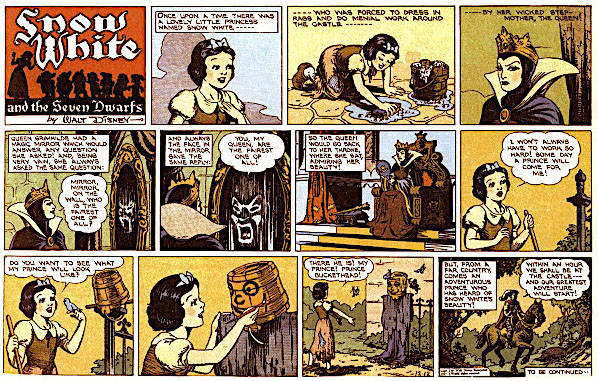
Walt Disney’s Snow White and the Seven Dwarfs (#3111T) by Hank Porter; from the 1944 Dell Comic Book. Newspaper version distributed by King Features Syndicate from December 12, 1937, to April 24, 1938. Running Time: 21 minutes.
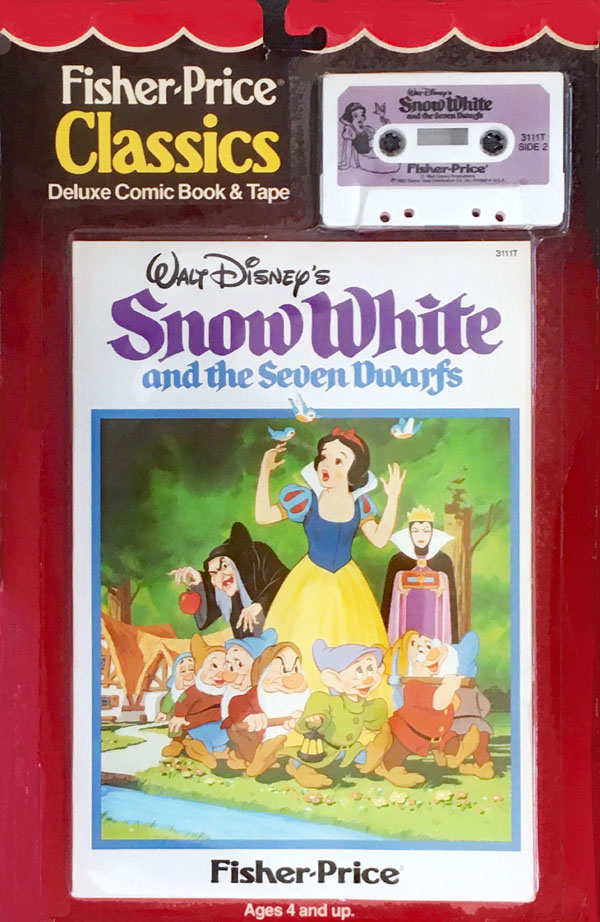
Walt Disney’s Pinocchio (Wonderful Adventures of Pinocchio) (#3114T) by Walt Kelly; from the 1945 Dell Comic Book. Running Time: 25 minutes.
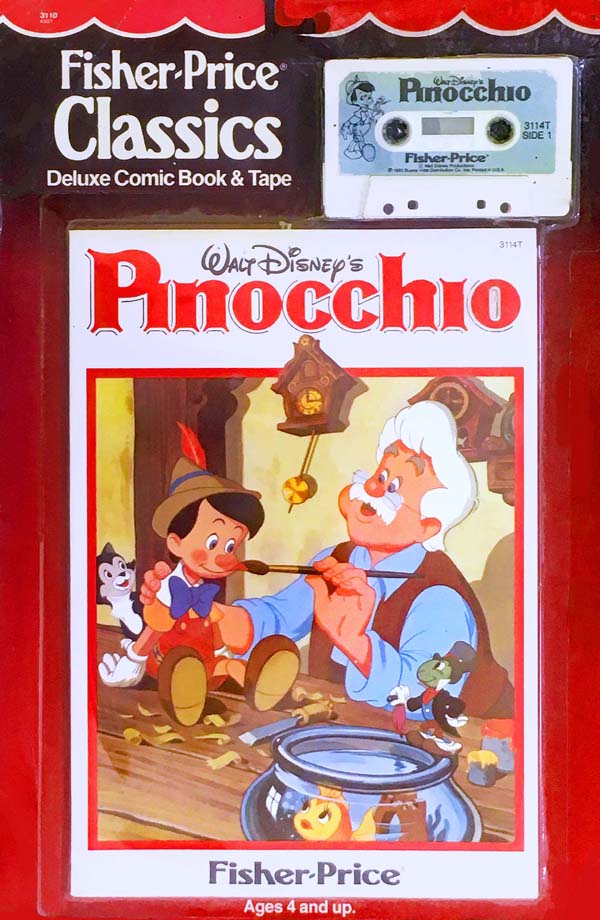
Walt Disney’s Bambi (#3113T) by Merrill De Maris; from the 1942 Dell Comic Book. Running Time: 22 minutes.
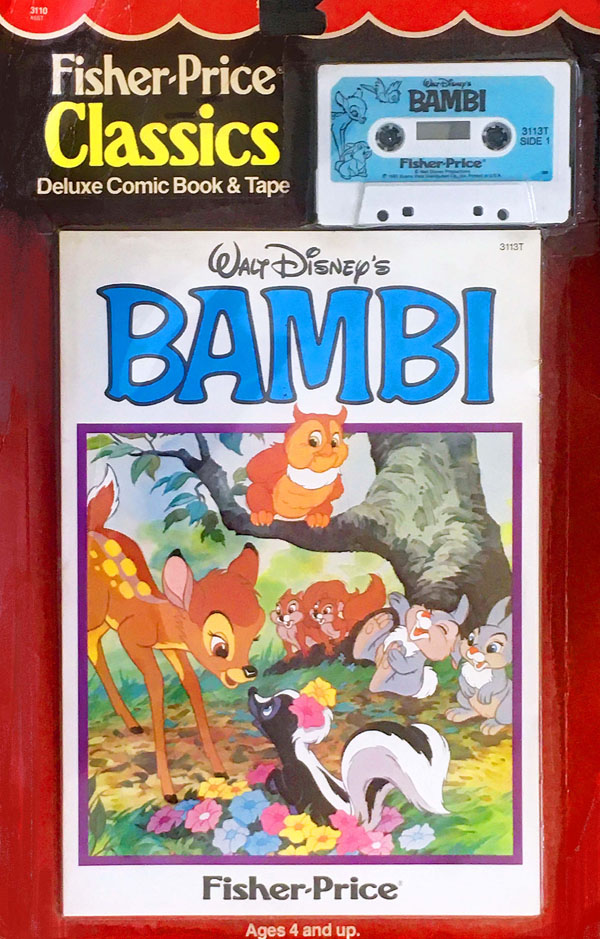
Walt Disney’s Cinderella (#3114T) by Dan Gormley; from the 1950 Dell Comic Book. Running Time: 24 minutes.
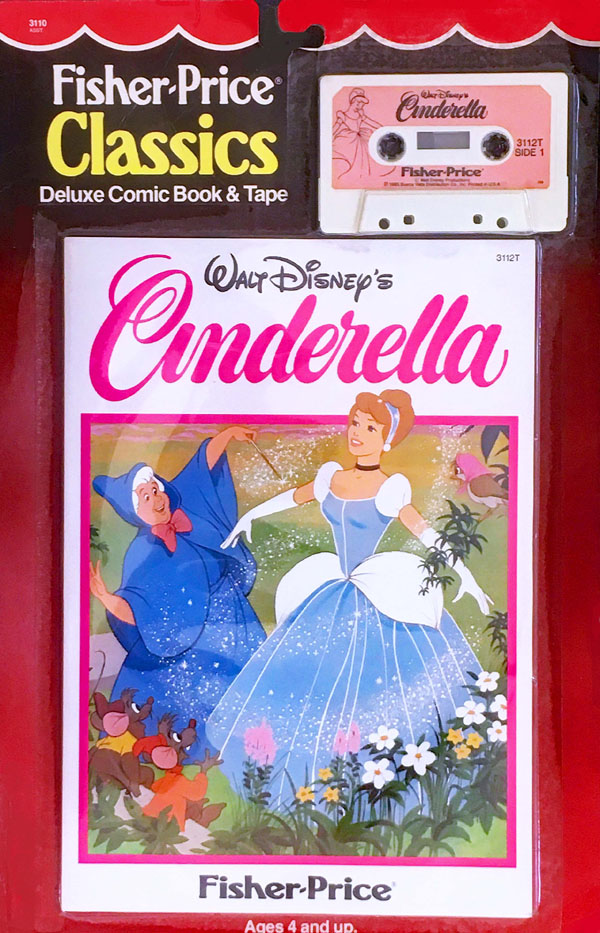
Walt Disney’s Peter Pan (#3116T) by Al Hubbard; from the 1953 Dell Comic Book. Newspaper version distributed by King Features Syndicate from January 4, 1953-June 14, 1953. Running Time: 28 minutes.
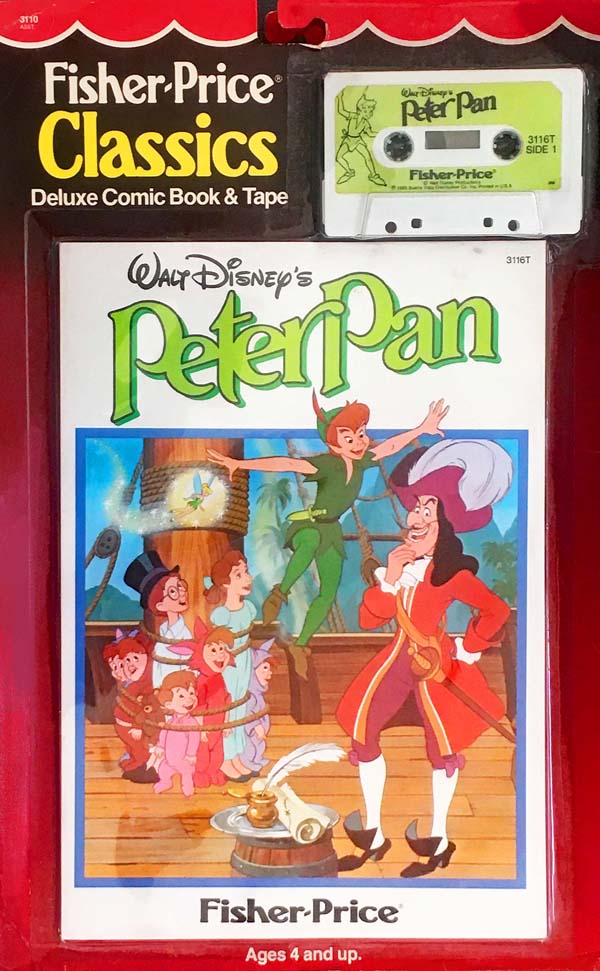
Walt Disney’s The Jungle Book (#3116T) by Carl Fallberg (adaptation), Al Hubbard (pencils) ; from the 1967 Gold Key Comic Book. Newspaper version distributed by King Features Syndicate from November 5, 1967-January 28, 1968. Running Time: 19 minutes.
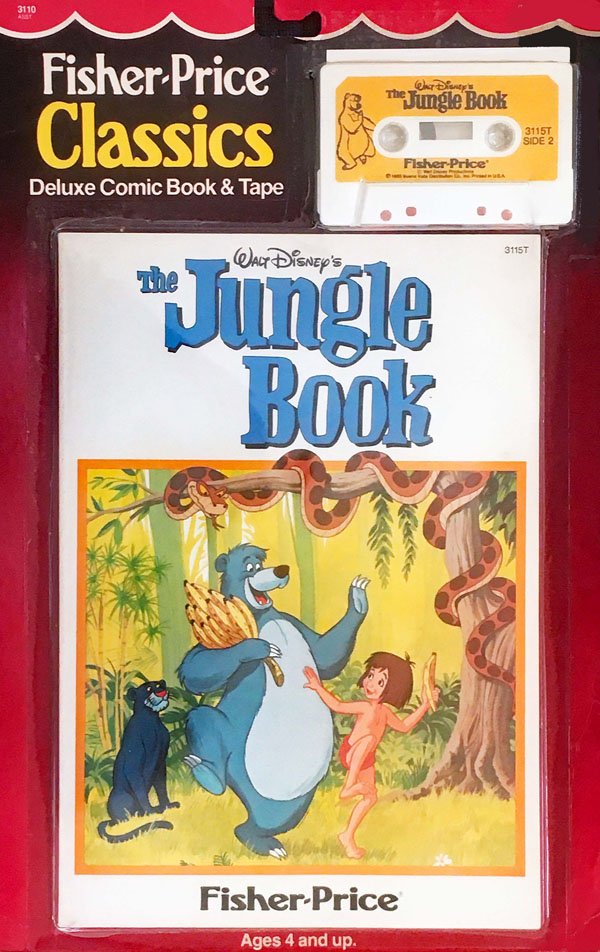
Dell partnered with Western Publishing in 1938 for their comic books until 1962, when Western published comics under their own Gold Key banner. Western was a longtime Disney partner, also printing the read-along books for Disneyland Records when they began in 1965, among many other things. Western was also an early investor in Disneyland Park.
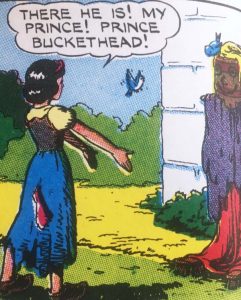 Western published Golden Books for decades (following Simon and Schuster), releasing hundreds of Disney-themed titles and others written and illustrated by some of the studios greatest creatives, some long gone from the lot, like Gustav Tenggren (The Poky Little Puppy) and many while they were still on staff (many of the Mary Blair books are still in print). For a few years in the nineties, there was a Golden Book Store on Main Street, U.S.A. in the Magic Kingdom Park at Walt Disney World Resort in Florida as well as in Manhattan.
Western published Golden Books for decades (following Simon and Schuster), releasing hundreds of Disney-themed titles and others written and illustrated by some of the studios greatest creatives, some long gone from the lot, like Gustav Tenggren (The Poky Little Puppy) and many while they were still on staff (many of the Mary Blair books are still in print). For a few years in the nineties, there was a Golden Book Store on Main Street, U.S.A. in the Magic Kingdom Park at Walt Disney World Resort in Florida as well as in Manhattan.
It is almost miraculous that six original Disney/Dell vintage comics were so beautifully dramatized word-for-word—and that they were virtually hidden in plain sight in retail stores, most of us little realized what they really were until they were opened and heard.
Some of the finest selections in the King Features syndicated newspaper comic series, Walt Disney’s Treasury of Walt Disney Classic Tales, have been collected into several volumes with introduction by our colleague Michael Barrier. In addition to the comic book artists listed above, other renowned masters such as Alex Toth (Darby O’ Gill and the Little People) and Jack Kirby (The Black Hole) contributed to these wondrous works.
“Prince Buckethead” (1937)
Often there is film story material that is changed in the film production before the printed materials can be updated. The opening scene of Snow White contains a deleted sequence in which the Princess assembles a “dream prince” from found objects. It would have been difficult to animate, especially when the Prince, the most challenging character to animate, had so much to do. It would take over twenty years before a similar sequence could be accomplished in Sleeping Beauty. Note that the Queen has an “adorable” name and that she is momentarily flattered when eavesdropping on the young couple.


 GREG EHRBAR is a freelance writer/producer for television, advertising, books, theme parks and stage. Greg has worked on content for such studios as Disney, Warner and Universal, with some of Hollywood’s biggest stars. His numerous books include Mouse Tracks: The Story of Walt Disney Records (with Tim Hollis). Visit
GREG EHRBAR is a freelance writer/producer for television, advertising, books, theme parks and stage. Greg has worked on content for such studios as Disney, Warner and Universal, with some of Hollywood’s biggest stars. His numerous books include Mouse Tracks: The Story of Walt Disney Records (with Tim Hollis). Visit 





















































I don’t know whether I’d call Grimhilde an “adorable” name, but in Norse mythology, Grimhilde was a beautiful but evil queen and sorceress, so it seems very appropriate here. I forget the details of the story, but as I recall she used to cast spells of lust and forgetfulness upon her enemies in order to trick them into incestuous marriages. Oh well, as Evil the Cat said in the Earthworm Jim cartoons, “Everyone needs a hobby.”
The name Grimhilde might also have been chosen to acknowledge the Brothers Grimm, who first transcribed the Snow White folk tale.
Adriana Caselotti gives quite a good performance as the young princess, especially considering that she was nearly seventy when she recorded it.
And I suppose that the villains of Disney’s recent series “The 7D”, Grim and Hildy Gloom, is a little shout-out to that little-known name.
Sadly, IDW’s Treasury of Classic Tales books ended with volume three, despite that book listing the stories to be featured in volume four. Barrier comments not only on the strips and their creators, but on the films they adapt and their place in the Disney company’s evolution. The appeal of the strips themselves is mainly nostalgic.
The three books do capture the height of boomer-era Disney, up through “In Search of the Castaways”.